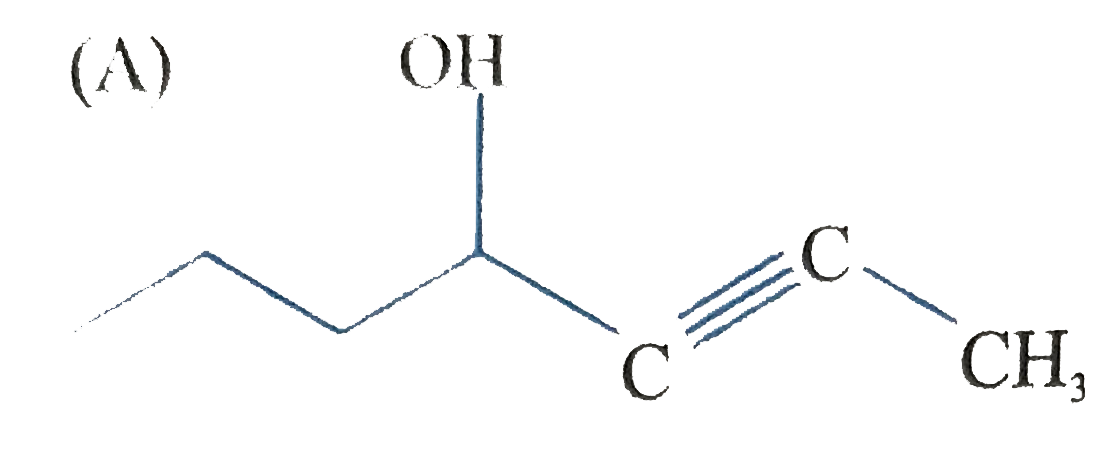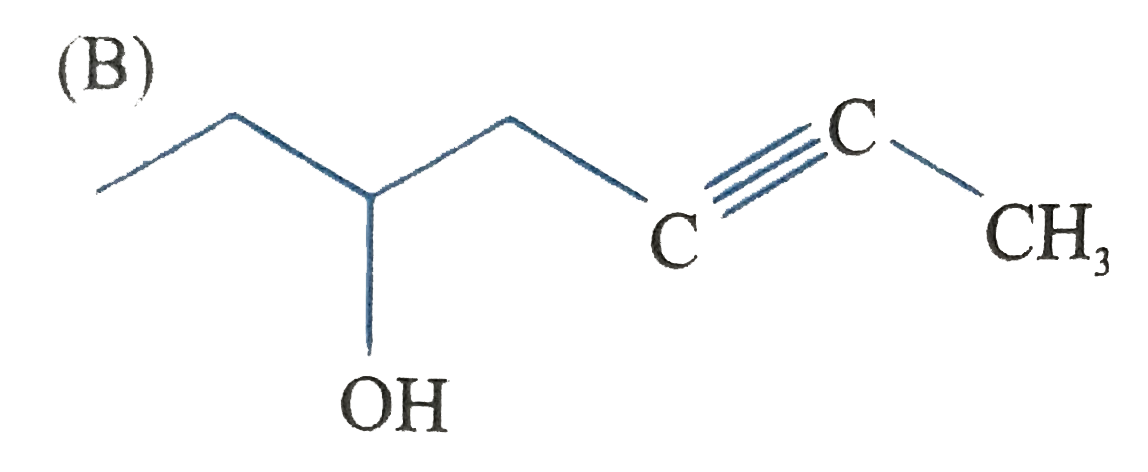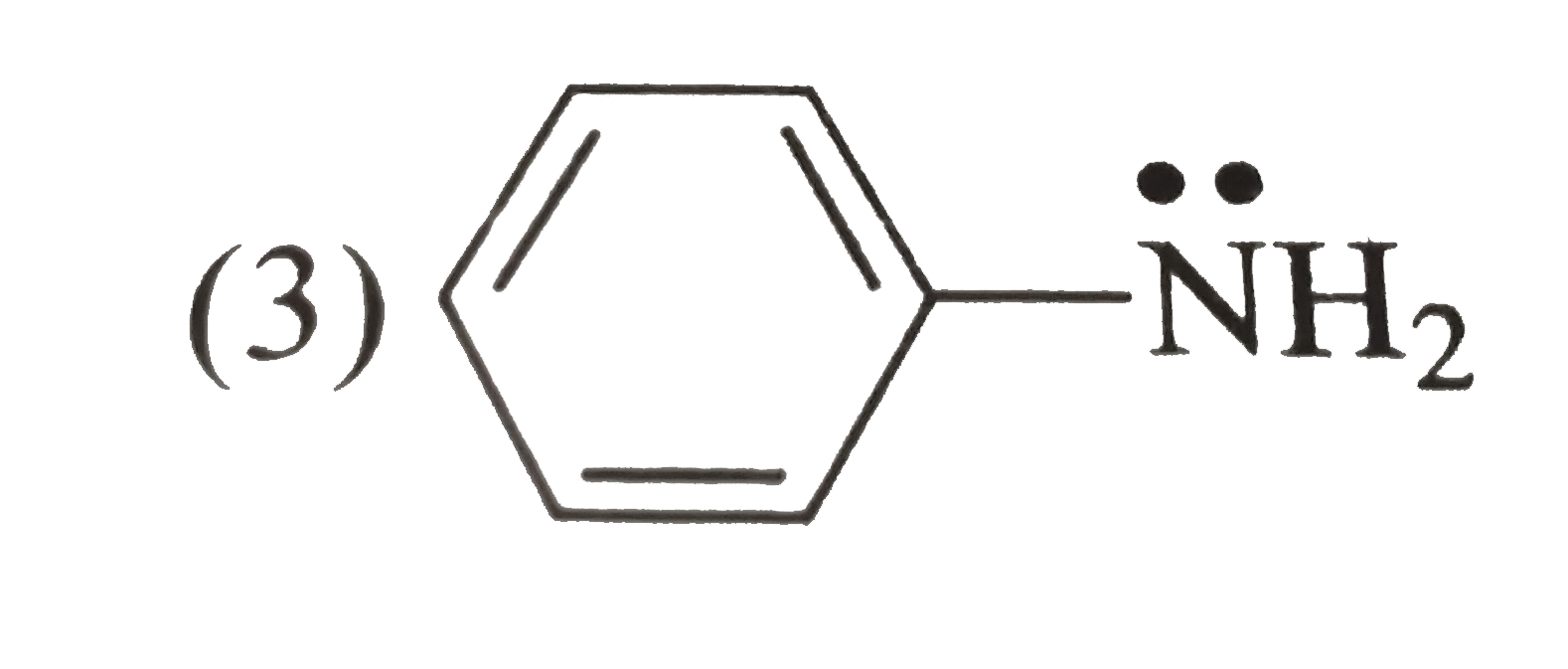CH3CH(CH3)CH2NH2NaNO2/HCI−−−−−−−−→(A)aq.KON−−−−→(B) compound (B ) is :
CH3CH(CH3)CH2OH
(CH3)2C(OH)C2H5
(CH3)3COH
None of these
The correct Answer is:C
To solve the question, we will follow the steps outlined in the video transcript, detailing the reactions and transformations that occur.
1. Identify the Initial Compound:
The starting compound is CH₃-CH(CH₃)-CH₂-NH₂ (isobutylamine).
2. Reaction with Sodium Nitrite and Hydrochloric Acid:
When isobutylamine reacts with sodium nitrite (NaNO₂) in the presence of hydrochloric acid (HCl) at 0°C, it forms a diazonium salt. The reaction can be represented as:
CH₃−CH(CH₃)−CH₂−NH₂+NaNO₂+HCl→CH₃−CH(CH₃)−CH₂−N₂+Cl−
This product is an aliphatic diazonium salt, which is unstable.
3. Decomposition of the Diazonium Salt:
The diazonium salt is unstable and will decompose upon heating or even at room temperature, releasing nitrogen gas (N₂) and forming a carbocation:
CH₃−CH(CH₃)−CH₂−N₂+Cl−→CH₃−CH(CH₃)−CH₂++N₂
4. Rearrangement of the Carbocation:
The formed carbocation is unstable and can undergo rearrangement to form a more stable carbocation. In this case, a hydrogen atom from the adjacent carbon can shift to stabilize the carbocation:
CH₃−CH(CH₃)−CH₂+→CH₃−C+(CH₃)−CH₃
This results in a tertiary carbocation.
5. Reaction with Aqueous Potassium Hydroxide (KOH):
The tertiary carbocation then reacts with aqueous KOH, where the hydroxide ion (OH⁻) attacks the carbocation:
CH₃−C+(CH₃)−CH₃+OH−→CH₃−C(OH)(CH₃)−CH₃
The final product is 2-methylpropan-2-ol (tert-butyl alcohol).
Final Answer:
The compound (B) is 2-methylpropan-2-ol.
---
The starting compound is CH₃-CH(CH₃)-CH₂-NH₂ (isobutylamine).
When isobutylamine reacts with sodium nitrite (NaNO₂) in the presence of hydrochloric acid (HCl) at 0°C, it forms a diazonium salt. The reaction can be represented as:
CH₃−CH(CH₃)−CH₂−NH₂+NaNO₂+HCl→CH₃−CH(CH₃)−CH₂−N₂+Cl−
This product is an aliphatic diazonium salt, which is unstable.
The diazonium salt is unstable and will decompose upon heating or even at room temperature, releasing nitrogen gas (N₂) and forming a carbocation:
CH₃−CH(CH₃)−CH₂−N₂+Cl−→CH₃−CH(CH₃)−CH₂++N₂
The formed carbocation is unstable and can undergo rearrangement to form a more stable carbocation. In this case, a hydrogen atom from the adjacent carbon can shift to stabilize the carbocation:
CH₃−CH(CH₃)−CH₂+→CH₃−C+(CH₃)−CH₃
This results in a tertiary carbocation.
The tertiary carbocation then reacts with aqueous KOH, where the hydroxide ion (OH⁻) attacks the carbocation:
CH₃−C+(CH₃)−CH₃+OH−→CH₃−C(OH)(CH₃)−CH₃
The final product is 2-methylpropan-2-ol (tert-butyl alcohol).
The compound (B) is 2-methylpropan-2-ol.
Similar Questions
Knowledge Check
- Question 1 - Select One
CH3CH2NH2(CH3CO)2−−−−−−→ΔA+B, (A) and (B) are
ACH3CH2NHCOCH2+CH3CH2N≡CBCH3CH2NO2+CH3COOHCCH3CH2NHCOCH3+CH3COOHDCH3CH2NO2+CH3CH2NHCOCH3 - Question 2 - Select One
CH3CH3CH3NH2NaNO2−−−−→HCl Product (s)
Which of the following is not possible as product ?ACH3CH2CH2OHBCH3C∣OHHCH3CCH3CH=CH2DCH3C∣ClHCH2−Cl - Question 3 - Select One
CH3CH2CH2−O∣∣C−H+CH3−C≡CHNa,NH3(l)−−−−−−−→
A B
B C
C D
D
Write A,B and C in the given reactions :
(i)C6H5N2CICuCN−−−→AH2O/H+−−−−−→BNH3−−→C
(ii) CH3CH2BrKCN−−→ALiA1H40−−−−→BHNO2−−−→0∘CC
(iii) C6H5NO2Fe/HCI−−−−→AHNO2−−−→273KBH2O/H+−−−−−→2ΔC
(iv) CH3COOH2NH3−−→ΔANaOBr−−−→BNaNO2/HCI−−−−−−−−→C
(v) CH3CH2INaCN−−−→AOH−−−−−−−−−−→partial hydrolysisBNaOH/Br2−−−−−−→C.View SolutionCH3CH2COOHBr2/RedP−−−−−−→Δ(A)alc.NH3−−−−→(B)
The final product (B) in above reaction is:View SolutionConsider the following three amines,
(1) CH3CH2−⋅⋅NH2
(2)CH2=CH−⋅⋅NH2

Arrange C-N bond length of these compounds in decreasing order :View SolutionPh−OH∣CH−CH3PCC−−→(A)NH2−NH−O∣∣C−NH2−−−−−−−−−−−−−→(B)
Product (B) is :View Solutionअभिक्रिया में प्राप्त उत्पाद B है-
CH3C≡C−H(i)NaNH2/NH3(l)−−−−−−−−−−−−−→(A)CH3−CH2−CH2−Br−−−−−−−−−−−−−→(B)View Solution

